Birding the Cleveland Way – Cold Kirby to Kepwick
Growing up on the northern edge of the North York Moors National Park, Richard has always wanted to walk the entire length of the Cleveland Way, to explore the landscape, birds and wildlife along this fabulous National Trail. His plan is to walk a different section every month over the course of 2024 and write a blog in the process. Joining him on these leisurely walks is artist Jo Ruth.
February 24 – Cold Kirby to Kepwick
Our fingers were crossed for good weather on this section of the walk, we couldn’t really visit the ‘best view in England’ unless it was clear. However, waking up to thick fog in the Vale of York was not very auspicious, thankfully on the drive north the fog magically vanished and was replaced by glorious sunshine. Our first stop was the area between Sutton Bank and Cold Kirby so we started at the National Park car park.
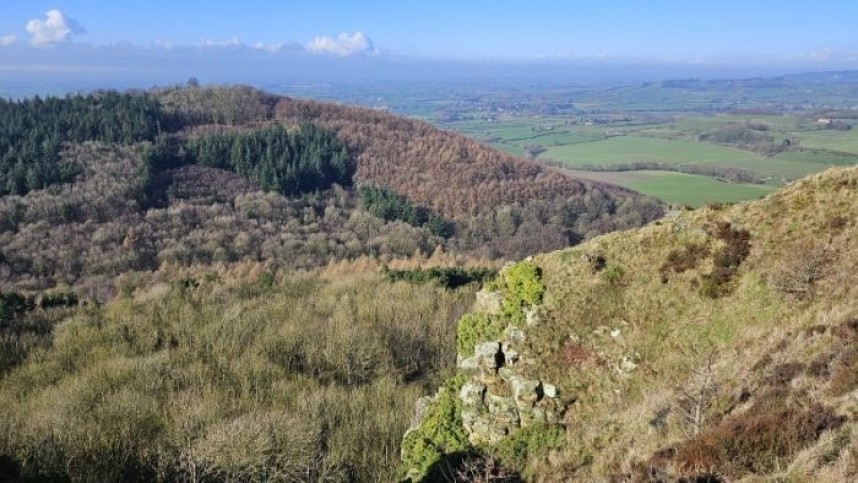
Early morning in February is a great time to listen out for the ‘stormcock’ a nickname given to Europe’s largest thrush the Mistle Thrush. These strident birds sing even in strong winds, hence the moniker. The song is simpler in structure and slower, without the hurried variety of its close relative the Song Thrush.
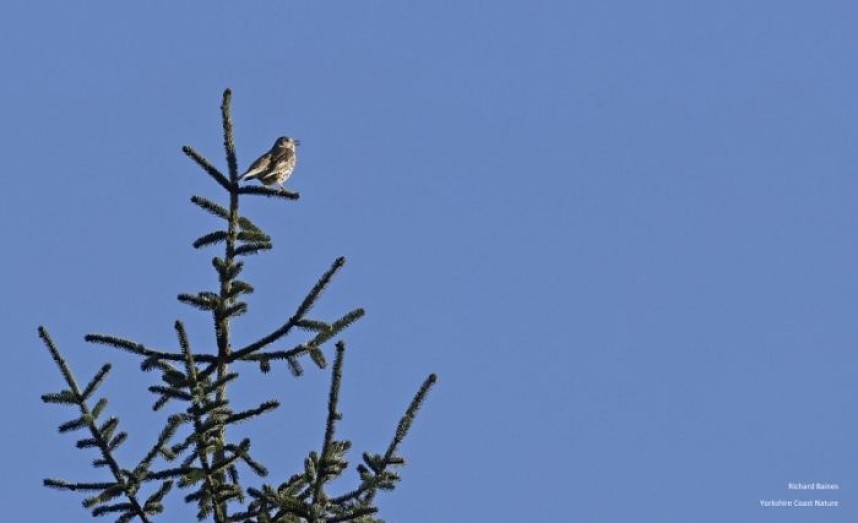
However, what a Mistle loses in variety it certainly gains in richness of tone and volume as its beautiful song carries far and wide. Just after we arrived, I could hear both Mistle and Song Thrush singing. The Mistle Thrush was sat atop a high Spruce tree. Two fabulous bird sounds to start the day.
Mixed woodland containing both coniferous and deciduous trees dominates land at the top of the escarpment at Sutton Bank. The presence of broadleaf native species such as Birch, Oak, Gorse and thorn species such as Hawthorn is essential for many songbirds such as Marsh Tits which feed on tiny invertebrates inhabiting these native trees. I could hear the ‘sneezing’ call of Marsh Tits in the Birch woodland as we walked towards Cold Kirby. Two were pecking furiously at lichen without bothering about us as we stood close by.
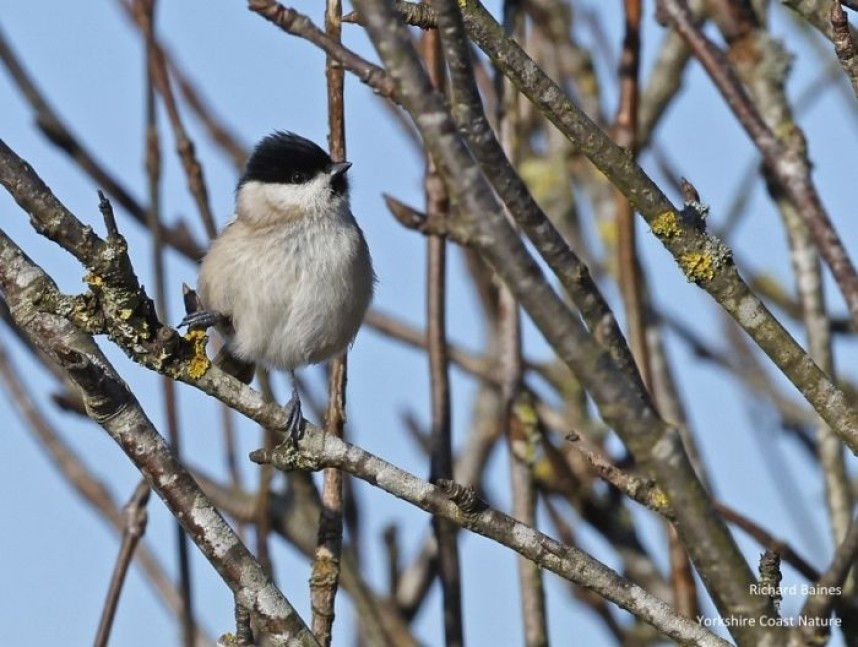
The land to the south-west of Cold Kirby which lies adjacent to the Cleveland Way is dominated by arable farming with smaller fields of grassland. A small number of Curlews can be found nesting here during the spring. On this morning, we were delighted to hear our first Curlew song of the year. An early territorial male putting his stamp on the area before any competitors arrive. After listening to the Curlew song, we followed the trail past several horse paddocks where a male Stonechat was making use of the many fences to perch and hunt in the rough grassland. Looking back towards Cold Kirby I counted six Common Buzzards and a single Red Kite.
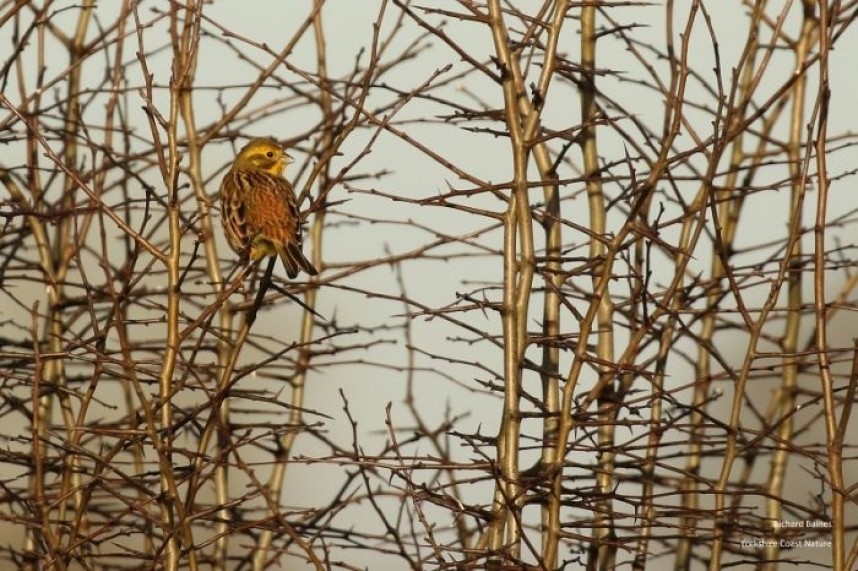
On the edge of the forest close by, I heard a Yellowhammer singing. The sound of both Curlew and Yellowhammer really felt like spring was just around the corner.
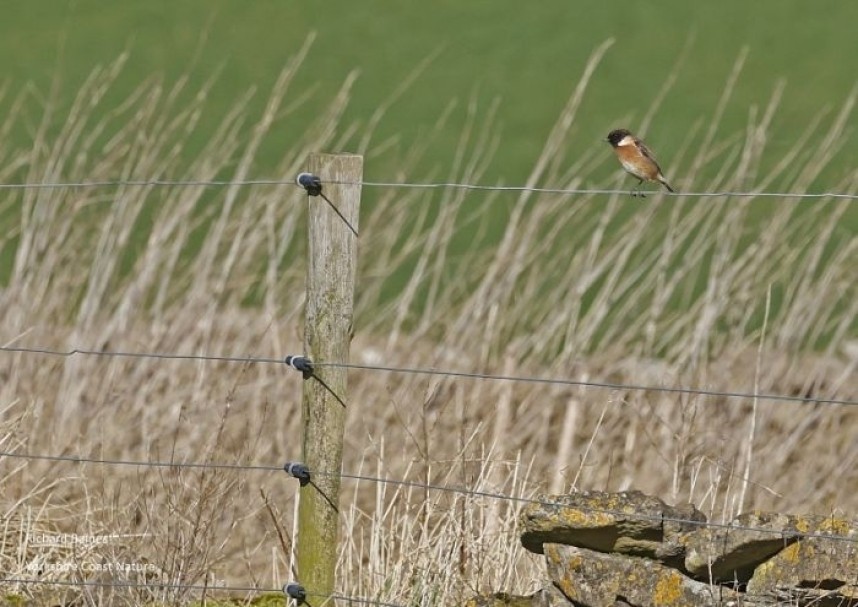
Before walking north from Sutton Bank towards Kepwick, we took a stroll down to the famous White Horse landmark. The view from this section of the trail is fabulous, we could even see the Pennines in the distance. Small numbers of Common Buzzards soared on the first thermals of the day and a Sparrowhawk rushed past us. Just before we saw the hawk, Long-tailed Tits and Blue Tits started alarm calling, their eyes are always sharper than ours. Nearby Siskins called overhead; their distinctive high pitch whistle carried on the light breeze.
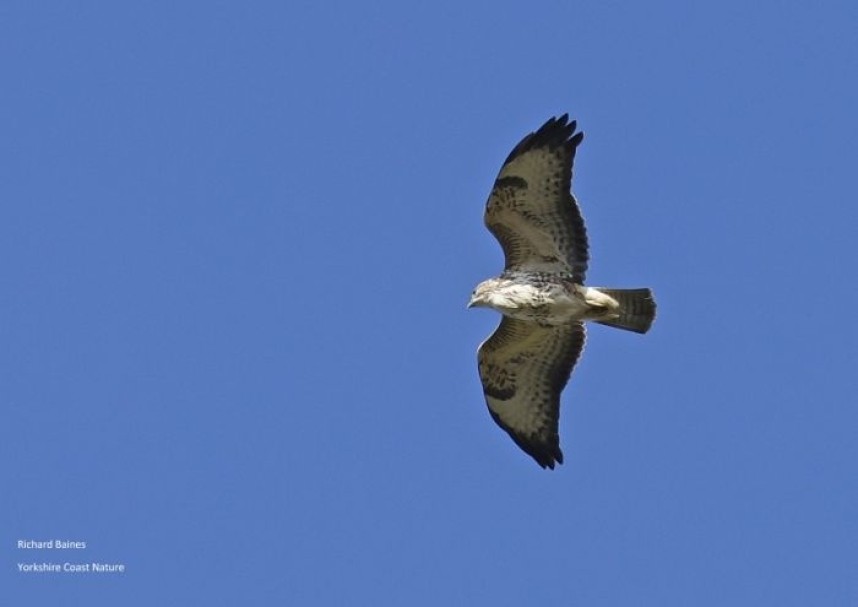
At the end of April or start of May, we will welcome back our North Yorkshire population of European Turtle Doves from their winter in Africa. The woodland here and the visitor centre bird feeding station can be a good area to look out for them or listen for the unique soft purring song of the male. As I walked the trail on this frosty February morning, I couldn’t help thinking about these birds which may still be in Mauritania or Senegal. Their migration is an 11,000km round trip to the UK and back to Africa. To learn more about our special North Yorkshire Turtle Doves CLICK HERE.
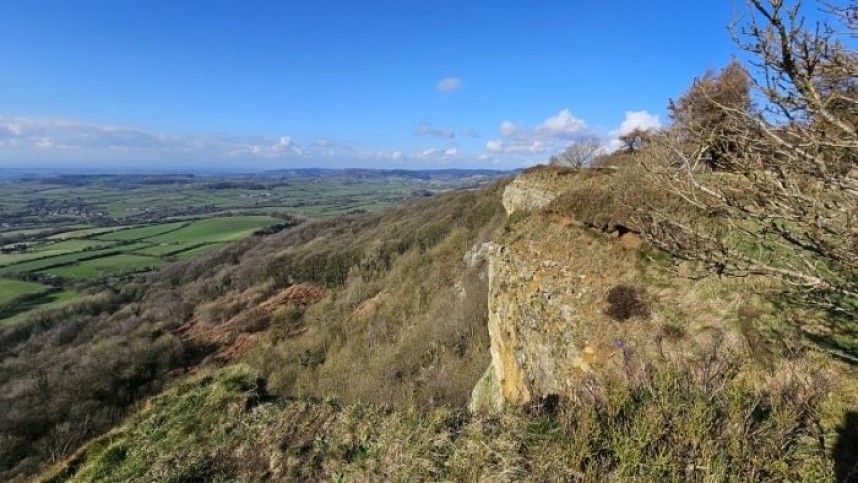
Pondering on the spring and marvelling at the view was not going to get us to Kepwick so we had to get our skates on. It was time to walk north. From Sutton Bank, the Cleveland Way follows the edge of the western escarpment of the North York Moors National Park. The lengthening day encouraged more birds of prey to soar above the woods below us. Among the buzzards was one distinctly pale bird. These pale morph Common Buzzards are frequent and can often be seen alongside the ‘normal’ plumage birds. On first view I thought it was a different species, only to realise I had been fooled again.
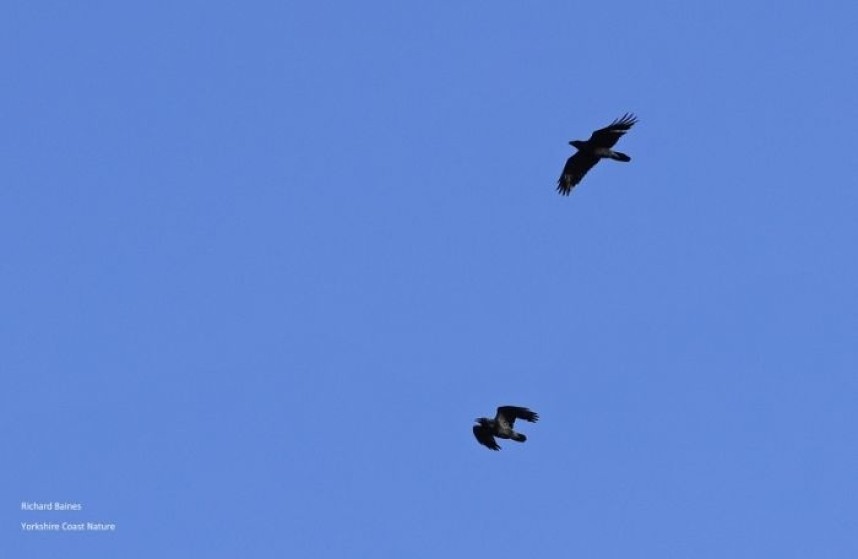
As we walked north, I was listening carefully for any interesting sounds. A Green Woodpecker ‘yaffled’ below us followed by the grumpy grunt of a Raven. I was very pleased to hear Ravens on this walk because they are still uncommon in the National Park. A short time later two flew over us heading for the moorland, grunting to each other as they flew by.
After the spectacular Boltby Scars, the trail enters coniferous forest where I could hear a Treecreeper singing and another Mistle Thrush. The late afternoon sunshine encouraged a rush of bird sounds just before the chill of the evening.
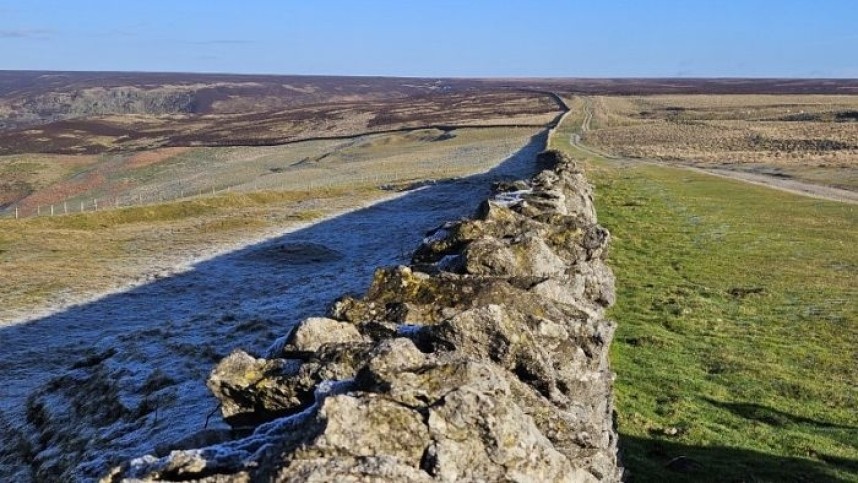
As the sun started to drop beneath the trees, we left the forest behind us and stepped out at a great time to enjoy the large vista and the heather moorland. Skylarks were singing above the grassland and I could hear Lapwings in the distance. The first returning Lapwings of the year are always a thrill to see. Two males were tumbling in the air chasing each other as the sun went down.
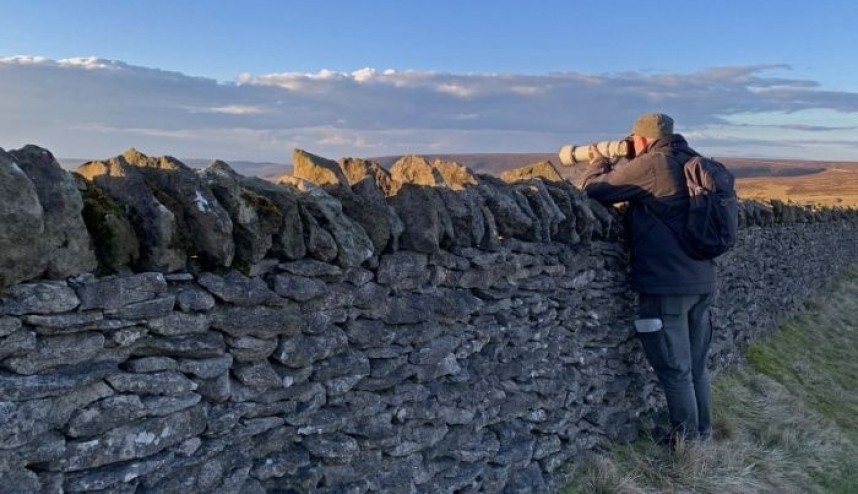
The high stone wall which runs parallel to the Cleveland Way afforded a great opportunity to photograph these birds without disturbing them. Hiding my human shape meant I could watch as they finished their final fling before settling down in the grassland to roost. This was a perfect end to a wonderfully crisp and sunny day full of the first signs of spring on the edge of the best view in England.
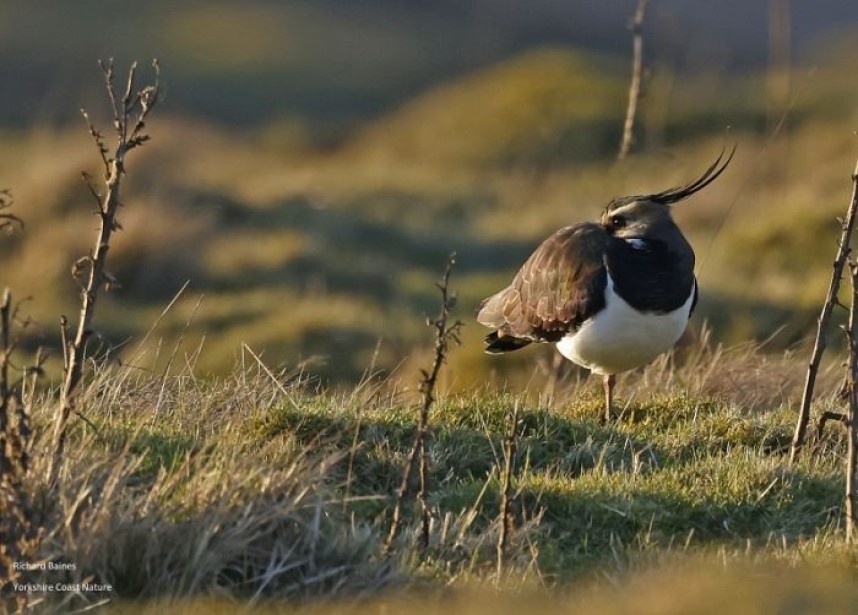
Director and Wildlife Guide
Yorkshire Coast Nature



 Back to Blog
Back to Blog
